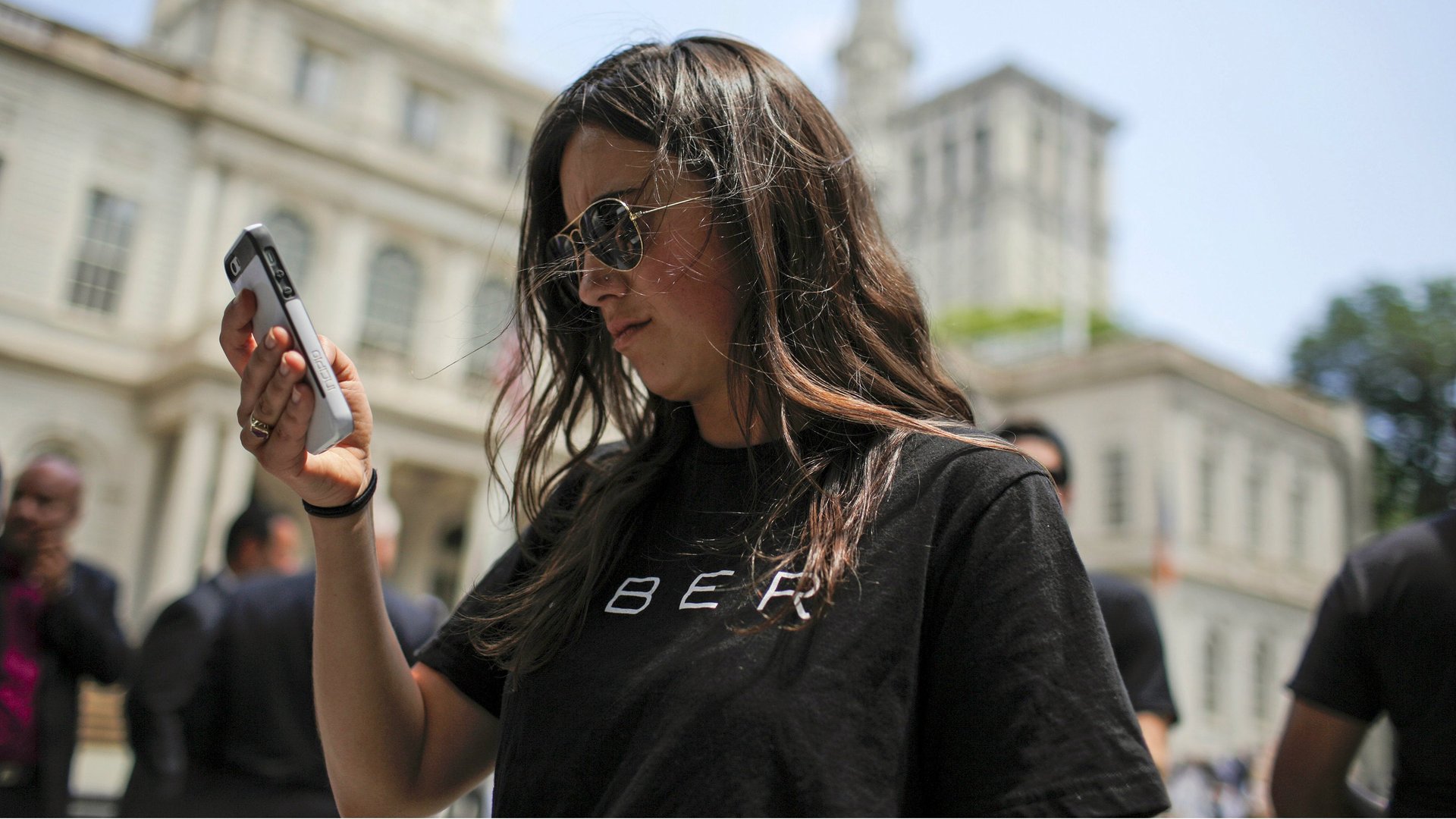A simple feature on Uber’s app could have helped prevent the Kalamazoo shootings
On Saturday, (February 20) tragedy struck Kalamazoo, Michigan when a registered Uber driver killed six people, the latest mass shooting to occur in the United States. The driver, a 45-year-old white man named Jason Brian Dalton, reportedly picked up a fare before he shot his first victim with a semi-automatic handgun, and then, according to at least one source, other fares between shootings during a seven-hour rampage.


On Saturday, (February 20) tragedy struck Kalamazoo, Michigan when a registered Uber driver killed six people, the latest mass shooting to occur in the United States. The driver, a 45-year-old white man named Jason Brian Dalton, reportedly picked up a fare before he shot his first victim with a semi-automatic handgun, and then, according to at least one source, other fares between shootings during a seven-hour rampage.
The incident calls into question yet again Uber’s hiring standards, and how safe passengers are when they travel with Uber. Uber and Lyft drivers have committed a string of violent assaults against passengers, and critics argue the company is not vetting its drivers thoroughly enough.
Too often, drivers accused of assaulting passengers are revealed to have committed similar crimes in the past, despite passing Uber’s background checks. In this case, tightening background checks would not have helped, because Dalton had no criminal record. Uber also has a total ban on guns, for either passengers or drivers, but this weekend’s shooting shows how hard that is to enforce.
Instead, passengers and policy-makers should push for the introduction of a real-time, emergency button inside of Uber’s app that can alert the company, and possibly law enforcement as well, to drivers who appear unsafe.
Uber has introduced such a feature before. In India, not long after a rape perpetrated by an Uber driver in Delhi made international headlines, Uber introduced a “panic button” for users across the country. Located right above the map, passengers that press the button mid ride will reach the police by phone, and also send an “SOS alert” to local authorities that lets them track the vehicle’s whereabouts in real time, using software provided by Uber.
Dalton’s behavior appeared suspicious to at least one of his riders on the day of his rampage, who told media Dalton left him “scared shitless.”
“We got about a mile from my house, and he got a telephone call. After that call, he started driving erratically, running stop signs,” Matt Mellen told local media outlet WMMT. “We were kind of driving through medians, driving through the lawn speeding along and then finally, once he came to a stop, I jumped out of the car and ran away.” Mellen’s ride ended an hour before Dalton started shooting.
Mellen called 911 during his trip, but said they weren’t immediately helpful. Why wouldn’t he call Uber instead to warn them of their driver’s erratic behavior? The answer is simple—it’s really hard to contact them directly if you’re a US customer.
Uber offers no phone number to its driver partners or passengers. Anyone in the US looking to reach the company’s local offices for any reason—whether a lost item or a dangerous driver—can only reach the company through general e-mail lines, many of which connect to customer service agents in the Philippines.
Uber does have an email address for safety-related inquiries at [email protected]. A page buried in the app titled “Critical Safety Response Line” tells users to either dial 911 in case of an emergency, or an 800 number (800-353-8237) that will connect them with an Uber representative. When Quartz dialed the 800 number today (Feb. 22) and stayed on the line as directed, the call was dropped almost immediately on one instance. On the second instance, we were directed by an emergency response representative, who said the team works from two locations in the United States, but declined to answer further.
Save for this number, there’s no way any passengers or drivers worried about their safety reach a local Uber branch and local police quickly during an emergency.
Uber declined to directly answer questions from Quartz about how the shooting might change its safety policies. “Our hearts and prayers are with the families of the victims of this devastating crime and those recovering from injuries. We have reached out to the police to help with their investigation in any way that we can,” said Uber’s Chief Security Officer Joe Sullivan in a prepared statement.
Uber wouldn’t comment on whether it might roll out its India feature worldwide. “We are constantly evaluating solutions developed in markets and their applications in other markets,” a spokesperson tells Quartz.
A real-time SOS button could benefit drivers too, according to Harry Campbell, a part-time Uber driver who keeps a blog sharing his experiences. “As it stands today, there’s actually no way for Uber drivers to contact Uber in real-time while they’re out driving,” he writes. “They’re asked to e-mail in about any problems they have with a specific passenger or ride, which seems almost ridiculous for a $50 billion company.